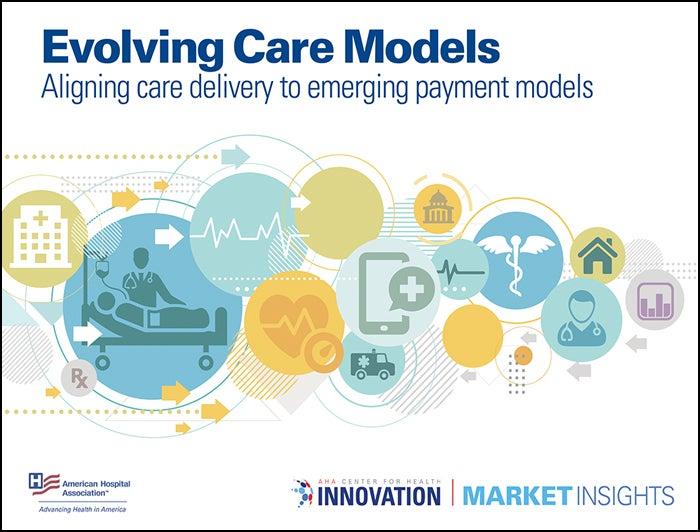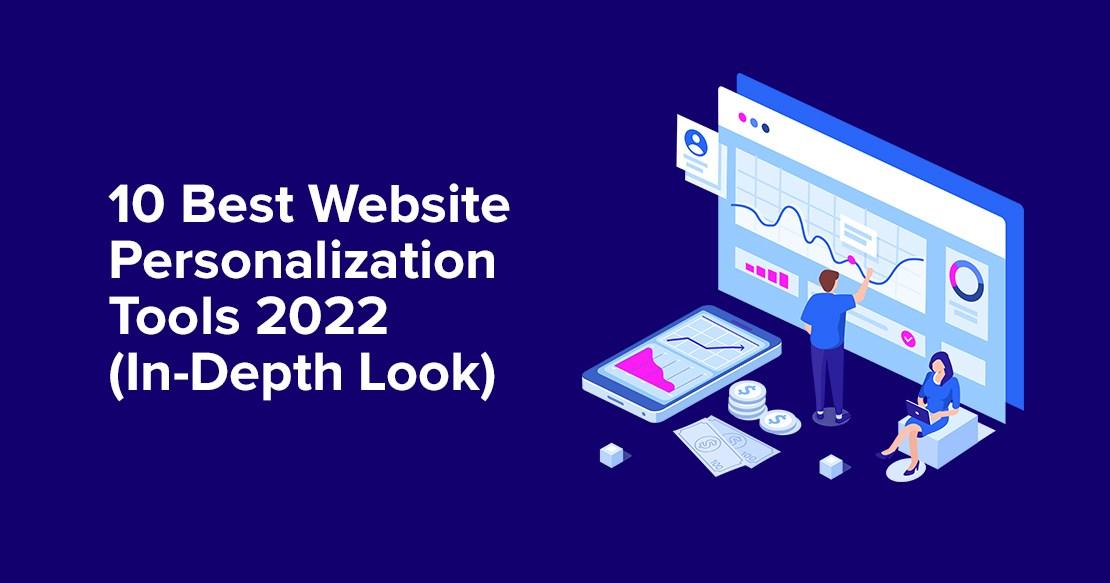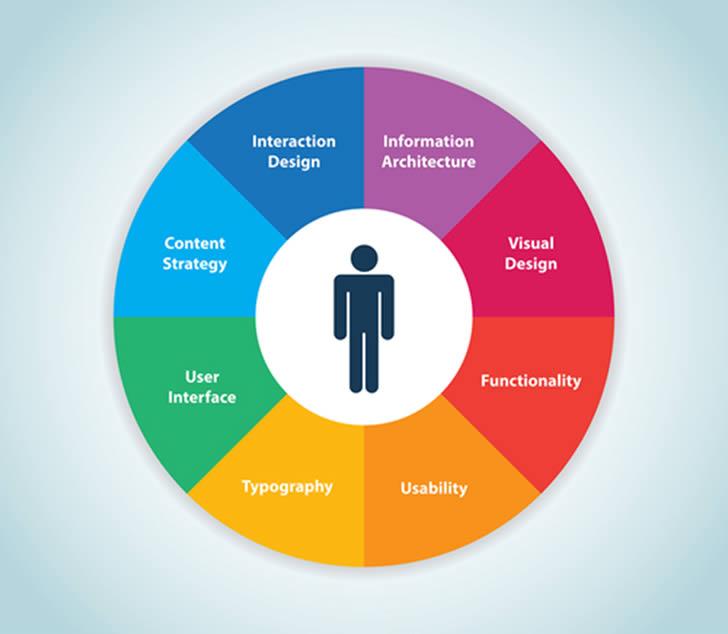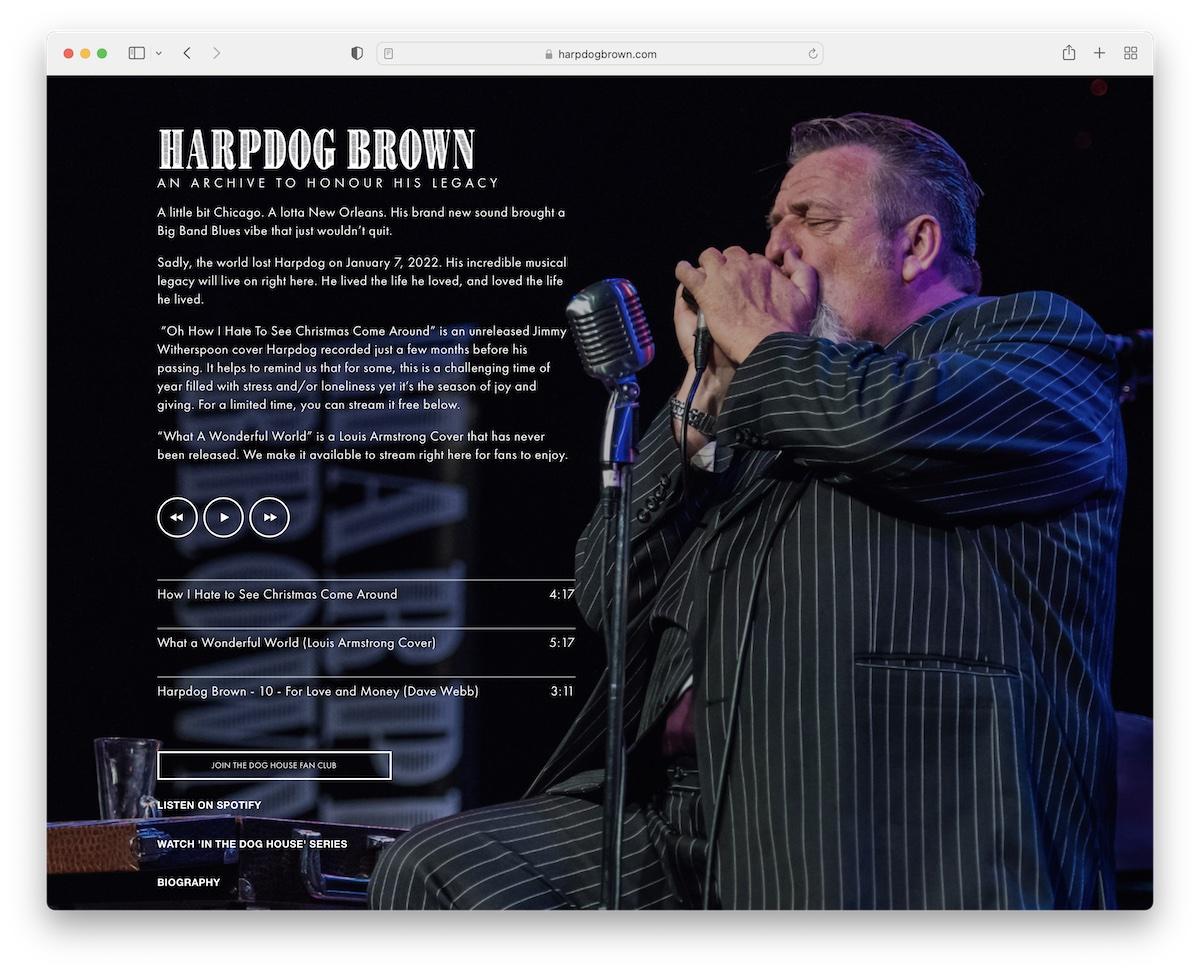In a world where our preferences seem to shape every aspect of our lives, from the movies we watch to the products we buy, it’s high time for digital experiences to catch up. Enter the realm of personalized user experiences, a concept that has revolutionized industries, notably healthcare. Imagine a website that not only remembers your last visit but anticipates your needs, guiding you effortlessly toward the content or services that resonate most with you. As WordPress continues to thrive as a leading content management platform, there’s a valuable lesson to be learned from healthcare’s commitment to tailoring experiences to individual patients. In this article, we’ll explore how the principles of personalized care can be applied to enhance user engagement and satisfaction in the WordPress ecosystem. Join us as we delve into the opportunities that lie ahead, unlocking the potential for a more intuitive, user-centric web experience. Let’s embark on this journey together and discover how we can transform the ordinary into the extraordinary.
The Power of Personalisation in User Engagement
In the digital age, personalisation is not just a luxury; it’s a necessity. When users engage with an online platform, they crave experiences tailored to their unique preferences and needs. This is where WordPress can take a page from the healthcare industry, which has long recognized the importance of individualized care. By adopting similar strategies, WordPress can significantly enhance user engagement.
Consider how healthcare professionals assess patient needs through detailed histories and personal assessments. Similarly, WordPress can leverage user data to create a more customized experience. Here are some effective methods:
- User Profiles: Encourage users to create profiles that reflect their interests and preferences. This not only personalizes content but also fosters a sense of community.
- Dynamic Content: Utilize plugins that allow content to change based on user interactions or preferences, ensuring that every visit feels unique.
- Targeted Recommendations: Just as doctors recommend treatments based on individual cases, WordPress can suggest posts, products, or services that align with users’ previous interactions.
Moreover, integrating data analytics tools can help WordPress sites understand user behavior better. By analyzing which content resonates most with visitors, site owners can refine their strategies to cater to user preferences. Consider the following simple table that illustrates user engagement metrics:
| Engagement Metric | Importance |
|---|---|
| Page Views | Indicates interest level in content |
| Time on Site | Reflects content quality and relevance |
| Bounce Rate | Shows how well a site retains visitors |
| Click-Through Rate | Measures the effectiveness of calls to action |
By focusing on these metrics, WordPress can become more attuned to its users’ needs, much like a healthcare provider who adjusts treatment plans based on patient feedback. This level of attentiveness not only boosts user satisfaction but also enhances loyalty, keeping users returning to the platform.
Incorporating these personalisation strategies will not just improve engagement; it will create a more meaningful connection between users and the content they consume. By learning from the healthcare sector, WordPress can transform user experiences from generic to genuinely personal, fostering a community where every individual feels valued and understood.

How Healthcare Models Can Transform WordPress User Experiences
Imagine stepping into a healthcare facility where every service is tailored to your unique needs, preferences, and even your medical history. This personalized approach not only enhances patient satisfaction but also optimizes outcomes. Now, consider how similar principles can be applied to transform the user experience on WordPress sites. By integrating healthcare models into WordPress design and functionality, we can foster environments that are not just user-friendly, but user-centric.
To achieve this, WordPress developers can adopt the following strategies:
- Dynamic Content Delivery: Implement algorithms that analyze user behavior and preferences, delivering customized content that resonates with each visitor.
- User Profiles: Encourage users to create profiles where they can save preferences, bookmark content, and receive tailored recommendations, much like personalized patient records.
- Feedback Loops: Create mechanisms for users to provide feedback easily, enabling continuous improvement in the site’s offerings and ensuring that users feel heard and valued.
Moreover, just as healthcare providers use data analytics to track patient outcomes, WordPress sites can utilize analytics tools to monitor user engagement and adjust strategies accordingly. By analyzing metrics such as page views, bounce rates, and user interaction, developers can gain insights into how users navigate the site, allowing them to refine the experience dynamically.
Here’s a quick comparison of traditional user experience and a personalized approach:
| Traditional User Experience | Personalized User Experience |
|---|---|
| One-size-fits-all design | Dynamic, tailored content |
| Generic user engagement | Individualized user interactions |
| Static feedback mechanisms | Continuous feedback integration |
Ultimately, the goal is to create an ecosystem where users feel as though the platform understands them. By integrating these healthcare-inspired strategies, WordPress can evolve from being merely a content management system to a robust platform that prioritizes user experience, making every visit feel like a customized journey. Just as patients thrive in a personalized healthcare environment, users will flourish in a WordPress space that recognizes and responds to their individual needs.

Understanding User Data: Lessons from Patient Care
In the realm of patient care, understanding user data is paramount. Just as healthcare professionals rely on detailed patient histories to make informed decisions, WordPress developers can harness user data to create more personalized and effective experiences. By examining the lessons learned in healthcare, we can identify strategies that enhance user engagement and satisfaction on digital platforms.
One essential lesson from patient care is the importance of comprehensive data collection. Healthcare systems utilize various methods to gather patient information—from electronic health records (EHR) to surveys and direct communication. Similarly, WordPress can implement tools to gather user feedback, behavioral data, and preferences. This can be achieved through:
- Customizable forms to capture user interests
- Analytics tools to track engagement patterns
- Surveys to assess user satisfaction and needs
Another crucial aspect is the use of data for personalization. In medicine, treatment plans are tailored to individual patients based on their unique medical histories and conditions. For WordPress, this means delivering content, recommendations, and features that resonate with users’ specific needs. Some effective strategies include:
- Dynamic content that adjusts based on user behavior
- Personalized email campaigns based on user activity
- Customizable user dashboards for a tailored experience
Furthermore, the healthcare sector emphasizes the significance of trust and privacy. Patients must feel confident that their data is secure and used responsibly. WordPress can adopt similar practices by ensuring transparent data policies and implementing robust security measures. A transparent approach can foster user trust and encourage them to share valuable insights.
To illustrate the potential impact of personalized experiences using user data, consider the following table that showcases possible enhancements:
| User Interaction | Traditional Approach | Data-Driven Personalization |
|---|---|---|
| Content Recommendations | Generic articles | Tailored articles based on user interests |
| Email Newsletters | One-size-fits-all | Customized content based on past interactions |
| User Support | Standard FAQs | Personalized support based on user queries |
By embracing these principles from the healthcare sector, WordPress can transform user engagement. Just as patients experience better outcomes with personalized care, users will benefit from enhanced experiences that cater to their unique preferences, ultimately leading to a more loyal and satisfied audience.
Creating Tailored Content Strategies for Diverse Audiences
In today’s digital landscape, understanding the unique preferences and needs of various audience segments is crucial for crafting compelling content. By employing a personalized approach, brands can resonate more deeply with their readers, just as healthcare providers tailor treatments based on individual patient profiles. This principle can be seamlessly integrated into WordPress content strategies, creating a more engaging user experience.
To effectively reach diverse audiences, consider the following strategies:
- Audience Segmentation: Analyze visitor data to categorize your audience based on demographics, behaviors, and interests. This information will allow you to create content that specifically addresses the needs of each segment.
- Dynamic Content: Use plugins that enable dynamic content changes based on the user’s profile. This can include different headlines, images, or entire sections tailored to specific audience segments.
- Feedback Loops: Encourage interaction through comments, polls, and surveys. Utilize this feedback to refine content strategies and ensure they resonate with your audience’s evolving preferences.
Implementing these strategies can be enhanced by utilizing relevant tools and plugins in WordPress. For instance, consider incorporating a content recommendation engine that suggests personalized articles based on users’ previous interactions. This not only keeps users engaged but also significantly boosts the likelihood of conversions.
Moreover, analyzing the data collected from user interactions can lead to valuable insights. Here’s a simple table showcasing how different content types can cater to unique audience segments:
| Audience Segment | Preferred Content Type | Example Topic |
|---|---|---|
| Young Professionals | How-to Guides | “Boosting Productivity with Time Management Tools” |
| Parents | Listicles | “10 Essential Tips for New Parents” |
| Students | Video Content | “Study Hacks for Exam Success” |
By adopting a healthcare-inspired model of personalization, WordPress content creators can foster deeper connections with their audiences. This not only enhances the user experience but also cultivates loyalty, transforming casual visitors into dedicated followers. The time to embrace tailored content strategies is now—because every user deserves a unique experience that speaks to them.

The Role of AI in Enhancing Personalised Interactions
AI technology is transforming how businesses, including those in the WordPress ecosystem, foster personalized interactions with their users. By leveraging data analytics, machine learning, and natural language processing, AI can enable platforms to tailor experiences that resonate with each individual. This approach not only enhances user engagement but also builds loyalty and trust.
One of the most significant advantages of AI is its ability to analyze user behavior in real-time. Websites can track how visitors navigate, what content they consume, and what actions they take. This data can be utilized to create dynamic content that adapts to the user’s preferences, ensuring that they see what is most relevant to them. Here are some ways AI can aid in this customization:
- Content Recommendations: AI algorithms can suggest articles, products, or services based on past interactions.
- Behavioral Targeting: By understanding visitor patterns, websites can deploy targeted messages that resonate more with users.
- Personalized Email Campaigns: AI tools can automate and optimize email outreach, ensuring that content is tailored to individual interests and browsing history.
Furthermore, incorporating AI chatbots can significantly improve the user experience. These bots offer instantaneous responses to inquiries, enabling visitors to receive assistance at any hour. The beauty of AI chatbots lies in their ability to learn from interactions, becoming more adept at providing relevant solutions over time. Here’s how they enhance engagement:
- 24/7 Availability: Users can get help whenever they need it, regardless of time zones.
- Streamlined Support: AI can handle routine inquiries, freeing up human agents for more complex issues.
- Personal Touch: Chatbots can greet users by name and recall past interactions, making the experience feel more tailored.
Moreover, AI can facilitate the creation of intelligent forms that adapt based on user input, improving conversion rates. Imagine a situation where a user provides their location; an AI-powered form could dynamically adjust the options in real-time, ensuring a more fluid and engaging experience. Below is a simple illustration of how an intelligent form could function:
| User Input | Dynamic Output |
|---|---|
| Location: New York | Suggested Events: Broadway Shows, Local Concerts |
| Location: San Francisco | Suggested Events: Tech Meetups, Art Exhibitions |
AI is not just a tool; it’s a game-changer in how personalized interactions are crafted in the digital landscape. By studying healthcare’s successful application of AI to customize patient experiences, WordPress can similarly evolve, creating environments that feel personal, relevant, and engaging. As businesses adopt these technologies, they stand to gain not only in user satisfaction but also in long-term loyalty.
Building Trust: Transparency and User Consent in WordPress
Trust is a cornerstone of any successful online presence, especially for WordPress sites that strive to offer personalized user experiences. To foster this trust, it’s essential to prioritize transparency and user consent. Users today are increasingly wary of how their data is used, making it vital for website owners to be open about their practices.
Consider the healthcare industry, where patient data is handled with the utmost care and transparency. There are key lessons that WordPress can adopt to enhance user trust:
- Clear Privacy Policies: Just as healthcare providers must inform patients about their data usage, WordPress sites should have easily accessible and comprehensible privacy policies. These documents should outline what data is collected, how it is used, and who it is shared with.
- User Consent: Implementing opt-in mechanisms for data collection empowers users to control their information. This could include consent checkboxes or pop-up notices that clearly explain what users are agreeing to when they provide their data.
- Data Transparency: Websites can take a page from healthcare by offering users insights into their data usage. For example, a dashboard where users can see what information is collected and how it’s used can enhance trust significantly.
Moreover, it’s important to utilize modern tools that facilitate this transparency. For instance, WordPress plugins that manage cookie consent and data protection regulations can be incredibly useful. Ensuring these tools are user-friendly and aesthetically integrated into the website design can make the process seamless.
To illustrate how these concepts can be applied, consider the following table highlighting best practices for building trust through transparency:
| Practice | Description | Benefit |
|---|---|---|
| Privacy Policy | Accessible document outlining data practices. | Increases user confidence. |
| Opt-In Mechanism | Requires user consent before data collection. | Empowers users and builds trust. |
| User Data Dashboard | Interface for users to see their data usage. | Enhances transparency. |
By incorporating these elements, WordPress sites can not only comply with regulations but also create a strong foundation of trust with their users. Remember, transparency and user consent are not just legal obligations; they are powerful tools for building lasting relationships with site visitors.
Leveraging User Feedback for Continuous Improvement
Understanding user feedback is crucial for enhancing personalized experiences on your WordPress site. Just as healthcare professionals rely on patient insights to refine treatments, WordPress site owners can harness user input to tailor their offerings effectively. This continuous feedback loop not only fosters a deeper connection with users but also drives ongoing improvements that keep your site relevant and engaging.
To effectively leverage user feedback, consider implementing these strategies:
- Surveys and Polls: Regularly engage your audience with short surveys to gather insights on their preferences and pain points. Tools like WPForms can simplify this process.
- User Testing: Conduct sessions where real users navigate your site. Observing their interactions can reveal areas for enhancement that you might not have considered.
- Comments and Suggestions: Encourage users to leave feedback directly on your pages. A simple comment box can yield valuable insights.
- Analytics Tools: Utilize tools like Google Analytics to track user behavior. Understanding which pages are most visited or where users drop off can inform your content strategy.
Once you’ve gathered feedback, the next step is to categorize and prioritize it. Organizing feedback can help you identify trends and urgent issues that require immediate attention. Here’s a quick reference table to help prioritize feedback:
| Feedback Type | Priority Level | Action Needed |
|---|---|---|
| Site Navigation Issues | High | Redesign menu for clarity |
| Content Relevance | Medium | Update articles based on latest trends |
| Design Aesthetics | Low | Consider gradual updates |
it’s essential to communicate your changes back to your users. Let them know how their feedback has influenced your decisions and improvements. This not only builds trust but also creates a community where users feel valued and heard. By making feedback a cornerstone of your development process, you can ensure a more personalized and satisfying experience for every visitor to your WordPress site.

Implementing Personalisation Tools and Plugins Effectively
To truly harness the power of personalisation, integrating the right tools and plugins into your WordPress site is crucial. These technologies not only enhance user experience but also contribute to increased engagement and conversion rates. Here are a few strategies to ensure these tools are implemented effectively:
- Understand Your Audience: Before diving into plugins, take the time to research and understand your audience’s preferences and behaviors. Use analytics tools to gather data that can inform your personalisation strategy.
- Select the Right Plugins: Choose plugins that align with your goals. Popular options like
OptinMonsterfor lead generation orWooCommercefor e-commerce personalisation can significantly impact how users interact with your site. - Customisation Capabilities: Look for tools that allow for deep customisation. The more you can tailor content to individual users—whether it’s product recommendations or dynamic content—the more effective your personalisation efforts will be.
Once you have selected your plugins, the next step is integration. Make sure the tools you choose play well with your existing systems. A cohesive ecosystem ensures that data flows smoothly, enhancing the overall user experience. For instance, integrating a customer relationship management (CRM) tool with your email marketing plugin can allow for sophisticated personalisation based on user behavior and demographics.
Moreover, it’s essential to test and iterate on your personalisation efforts. A/B testing can be a game-changer, helping you to determine what resonates best with your audience. Implement changes based on real-time feedback and metrics. For example, if you notice that users are more likely to engage with specific types of content, double down on those strategies.
| Plugin | Purpose | Key Feature |
|---|---|---|
| OptinMonster | Lead Generation | Exit Intent Popups |
| WooCommerce | E-commerce Personalisation | Product Recommendations |
| Elementor | Page Builder | Dynamic Content |
| Mailchimp | Email Marketing | User Segmentation |
consider incorporating feedback mechanisms to understand whether your personalisation efforts are hitting the mark. Simple surveys or feedback forms can provide valuable insights into user preferences and experiences. By continuously refining your approach based on user input, you ensure that your personalisation strategy evolves alongside your audience’s needs.

The Future of Personalised User Experiences in Digital Spaces
As we venture further into a digital landscape saturated with content, the demand for tailored user experiences has never been more pronounced. Just as healthcare has adopted personalized approaches to patient care, digital platforms, particularly WordPress, have immense potential to create individualized user journeys. This leap towards personalization can enhance user engagement, increase satisfaction, and ultimately drive conversions.
One of the most effective strategies in healthcare is the utilization of data analytics to understand patient behaviors and preferences. WordPress can embrace similar methodologies by leveraging user data to create dynamic content that resonates with individual visitors. Consider implementing:
- Behavioral Tracking: Use plugins that analyze user interactions on your site to tailor content recommendations.
- Custom User Profiles: Allow users to create profiles that enable personalized content delivery based on their interests.
- Enhanced User Feedback: Regularly solicit feedback through surveys to refine the user experience and better cater to audience needs.
Moreover, just as healthcare providers segment patients into groups for targeted treatments, WordPress can benefit from audience segmentation. By categorizing users based on demographics, browsing history, and engagement levels, websites can serve customized content. This segmentation can be easily managed with tools available in WordPress, such as:
| Segmentation Method | Potential Benefits |
|---|---|
| Demographic Analysis | Tailor messages and offers based on age, gender, and location. |
| Behavioral Analysis | Provide content recommendations based on past user interactions. |
| Engagement Tracking | Identify and nurture high-value users with personalized campaigns. |
Additionally, incorporating AI-driven tools into WordPress can further enhance personalization. AI can analyze vast amounts of data to predict user behavior, allowing for proactive adjustments to user experiences. For instance, chatbots can provide instant support and personalized recommendations, much like a healthcare professional would do during a consultation. Embracing these technologies will empower businesses to meet users right where they are, reinforcing the notion that every interaction counts.
the rise of personalized user experiences in digital spaces echoes the progressive shifts seen in healthcare. By adopting these strategies, WordPress can transform its approach to user engagement, ensuring that every visitor feels valued and understood. The future is not just about attracting users; it’s about creating meaningful connections that resonate on a personal level.

A Call to Action: Embracing Change for Better User Journeys
In today’s digital landscape, the call for personalized experiences is louder than ever. Just as healthcare providers tailor their services to meet the unique needs of each patient, so too must WordPress users adapt their platforms to enhance the user journey. By embracing change, we can transform our websites into engaging environments that foster connection and trust.
Imagine visiting a website that understands your preferences and anticipates your needs. This level of personalization is not just desirable; it’s expected. Here are a few strategies inspired by healthcare that WordPress can implement:
- Data-Driven Insights: Utilize analytics to understand user behavior and preferences, allowing for tailored content delivery.
- User-Centric Design: Focus on creating intuitive navigation and interfaces that adapt to the user’s journey.
- Personalized Communication: Implement dynamic email marketing strategies that resonate with individual user interests.
- Feedback Loops: Encourage user feedback to continuously refine and improve their experiences.
To put these strategies into action, consider adopting a more personalized approach to your website’s content. Building a comprehensive database of user preferences can facilitate targeted content recommendations, much like how healthcare providers utilize electronic health records to personalize patient care. Below is a simple table that illustrates key areas of focus for personalization:
| Focus Area | Actionable Steps |
|---|---|
| Content Personalization | Use tags and categories to serve relevant articles. |
| User Engagement | Incorporate interactive elements like quizzes or surveys. |
| Community Building | Foster forums and discussion boards to encourage interaction. |
By fostering a culture of adaptability and learning from sectors like healthcare, WordPress can revolutionize how users interact with websites. The journey to a personalized user experience doesn’t just benefit our visitors; it enhances our content’s effectiveness and relevancy. Let’s seize this opportunity to innovate and adapt, creating a seamless and enriching user experience that keeps visitors coming back for more.
Frequently Asked Questions (FAQ)
Q&A: The Rise of Personalised User Experiences: What WordPress Can Learn from Healthcare
Q1: Why is personalisation important in today’s digital landscape?
A1: Personalisation has become the cornerstone of effective digital engagement. In an era where users are bombarded with content, tailored experiences help cut through the noise. Just like healthcare providers who tailor treatments to individual patients, websites that offer personalised experiences can significantly enhance user satisfaction and loyalty. By understanding user preferences and behaviors, businesses can create a more engaging and relevant experience, leading to higher conversion rates and improved customer retention.
Q2: How does the healthcare sector achieve personalisation?
A2: The healthcare industry excels in personalisation through in-depth patient data analysis. From electronic health records to wearable health technology, healthcare professionals can tailor their approaches based on individual needs. They consider various factors, such as medical history, lifestyle choices, and even genetics, to offer customised treatment plans. This level of personalisation fosters trust and improves outcomes, a lesson that WordPress can easily adapt for its users by leveraging data and analytics.
Q3: What can WordPress learn from healthcare about personalisation?
A3: There’s a wealth of wisdom for WordPress in the healthcare sector’s approach to personalisation. Firstly, WordPress can enhance user experience by implementing advanced analytics to track user behavior. This data can inform content recommendations, layout preferences, and even notification settings. Secondly, WordPress can offer more flexible user profiles, allowing users to tailor their dashboards and content feeds based on their interests. Just as patients feel more valued when their healthcare providers understand their needs, users will appreciate a WordPress site that feels uniquely theirs.
Q4: How can WordPress implement personalised user experiences effectively?
A4: WordPress can start by integrating plugins that enable personalisation features, such as content recommendation engines and user behavior tracking tools. By harnessing tools like machine learning algorithms, WordPress sites can dynamically adjust content based on user interactions. Additionally, user feedback can be instrumental; WordPress should actively seek input to refine their personalisation strategies continuously. This iterative approach will ensure that the user experience is always evolving and improving, much like the ongoing advancements in healthcare.
Q5: Are there any potential drawbacks to personalisation that WordPress should be aware of?
A5: Absolutely, while personalisation offers incredible advantages, it’s essential to approach it with caution. There’s a fine line between tailoring experiences and invading privacy. Users should feel in control of their data, and transparency is key. WordPress should ensure that any personalisation efforts are accompanied by clear privacy policies and opt-in options. Just as healthcare providers must secure patient confidentiality, WordPress should prioritize user trust to build strong relationships.
Q6: What are the long-term benefits of adopting healthcare-style personalisation in WordPress?
A6: The long-term benefits are substantial. By adopting a personalised approach, WordPress sites can foster deeper connections with their audience, increase user engagement, and ultimately drive sales and subscriptions. This not only leads to a more satisfied user base but also enhances brand loyalty. As healthcare providers strive for better patient outcomes, WordPress can aim for optimal user experience, creating a cycle of continuous improvement that benefits everyone involved.
Q7: How can businesses leverage these insights to improve their WordPress sites?
A7: Businesses can start by evaluating their current user engagement strategies and identifying gaps in personalisation. They should invest in training and resources to understand their audience better, utilizing surveys and analytics tools. By experimenting with different personalisation features—like tailored content and user-specific recommendations—they can discover what resonates best with their audience. The insights gained from healthcare can guide their approach, leading to a more effective and user-centric WordPress experience.
as the digital landscape evolves, embracing personalisation is no longer just an option; it’s a necessity. By taking cues from the healthcare sector, WordPress can create richer, more meaningful user experiences that drive engagement and satisfaction. Let’s make the leap towards a more personalised web together!
Future Outlook
As we wrap up our exploration of personalized user experiences and the lessons WordPress can draw from the healthcare sector, it’s clear that the future of digital interaction is all about connection and understanding. Just as healthcare providers strive to offer tailored care that meets the unique needs of each patient, WordPress has an incredible opportunity to enhance user engagement by prioritizing personalization.
Imagine a world where every visitor to your website feels like they’re being addressed directly, where content is curated just for them, and where their journey is seamless and intuitive. This isn’t just a lofty ideal; it’s a tangible goal within reach. By leveraging data insights, user feedback, and advanced technologies, we can transform websites into personalized experiences that resonate with users on a deeper level.
So, whether you’re a developer, a content creator, or a business owner, consider the possibilities. Embrace the lessons from healthcare—listen to your users, understand their needs, and innovate with empathy. The success of your website hinges on its ability to connect, engage, and build lasting relationships.
Let’s not just keep up with the times; let’s set the pace for a more personalized digital landscape. Together, we can redefine what it means to engage users and turn every visit into a meaningful experience. After all, in a world that’s becoming increasingly impersonal, personalization is not just an advantage; it’s essential. Are you ready to take the leap? Your users are waiting for you to lead the way!


